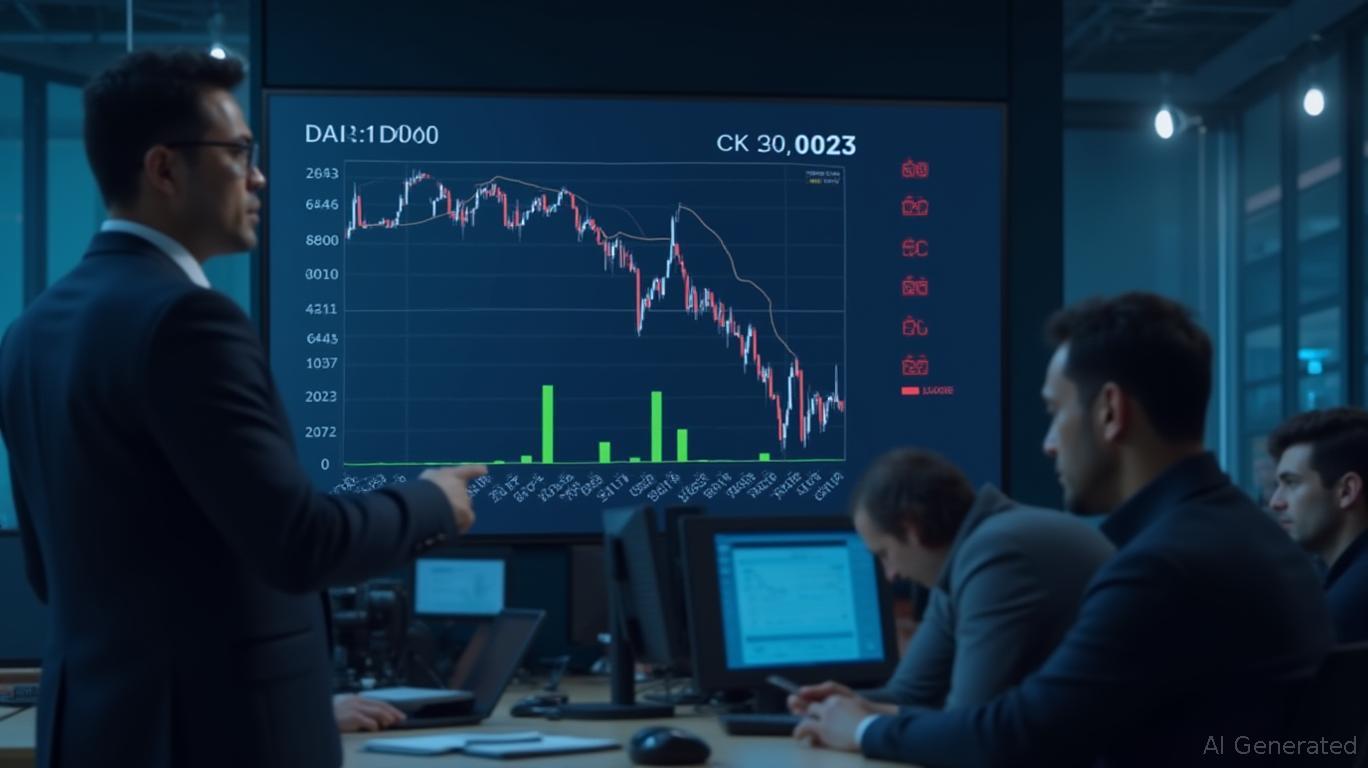Navigating DAX Volatility: Tariffs, TACO, and ECB Rate Risks
The European Central Bank's June 5 policy meeting looms as a critical juncture for DAX investors, with tariff volatility and shifting monetary policy creating a high-stakes environment. As U.S. trade tensions and the ECB's rate decisions intersect, sectors like autos, industrials, and tech face both short-term risks and long-term opportunities. This article dissects the dynamics and outlines a tactical strategy to capitalize on policy predictability.

The ECB's Rate Decision: A Catalyst for DAX Volatility
The
is widely expected to cut rates by 25 basis points on June 5, following April's reduction to 2.25%. This move aims to counter slowing inflation (projected at 1.7% in 2026) and support growth amid trade uncertainties. However, the July meeting remains uncertain, with policymakers divided on whether to pause or continue easing.The immediate impact on DAX equities will hinge on how the ECB frames its forward guidance. A dovish tone could lift rate-sensitive stocks like banks (e.g., Commerzbank) and utilities. Conversely, if the ECB signals caution due to geopolitical risks, defensive sectors may outperform.
Sector Spotlight: Tariff Exposure and Earnings Resilience
1. Autos (BMW, Daimler):
U.S. tariffs on European autos remain a Sword of Damocles. A 25% tariff on imports would cut BMW's U.S. profits by ~12%, yet the TACO cycle suggests investors could buy dips on threat announcements. The June rate cut may offset some margin pressure, but July's policy uncertainty could reignite volatility.
2. Industrials (Siemens, ThyssenKrupp):
These firms face dual pressures: tariffs on machinery exports and supply chain disruptions from trade wars. However, their exposure to green energy and infrastructure projects (e.g., hydrogen tech) offers a long-term hedge. Investors should focus on companies with pricing power or diversified revenue streams.
3. Tech (Infineon, SAP):
Semiconductor and software giants are vulnerable to U.S. export controls and data localization rules. Infineon's automotive chip sales, for instance, dropped 18% in Q1/2025 due to U.S.-China tensions. Yet, SAP's cloud revenue growth (+15% YoY) highlights resilience in digital transformation demand—a theme to bet on beyond tariffs.
The TACO Trade: Leveraging Policy Whiplash
The “Trump Always Chickens Out” (TACO) cycle remains a critical tool for DAX investors. Historically, markets drop 2-4% on tariff threats but rebound within days as policies retreat. This pattern persists post-Trump, as seen in May's EU tariff delay, which drove a 1.8% DAX rally.
Tactical Play:
- Buy the Dip: Short-term traders should accumulate tariff-sensitive stocks (e.g., BMW, Infineon) on threat announcements.
- Hedge with TACO Futures: Use CME's TACO contracts to lock in downside protection for Monday opens, given tariff news often breaks over weekends.
- Focus on Earnings Winners: Prioritize companies like SAP with strong cash flows and secular growth drivers.
Long-Term Opportunities: Beyond the Tariff Cycle
While short-term volatility persists, long-term investors should capitalize on structural trends insulated from trade wars:
- Green Tech: Siemens Energy's offshore wind projects and ThyssenKrupp's hydrogen partnerships are bets on EU climate mandates.
- Digital Transformation: SAP's cloud dominance and Infineon's AI chip R&D offer growth beyond tariff cycles.
Risk Management: Timing the ECB and Trade Truces
- June 5 ECB Meeting: Position for a rate cut-driven rally in cyclicals.
- July 9 EU Tariff Deadline: Monitor for U.S.-EU trade truce signals; a resolution could lift industrials and autos.
- October ECB Meeting: A delayed rate cut or hawkish shift could pressure rate-sensitive stocks—use options to protect gains.
Conclusion: Act with Precision
The DAX's path in 2025 will be shaped by ECB policy, trade negotiations, and the TACO cycle. Investors who combine tactical TACO trades with long-term bets on tech and green energy will outperform. Act now:
- Buy dips in autos/tech on tariff threats.
- Hedge with TACO futures ahead of ECB meetings.
- Lock in winners with strong earnings resilience.
The window for strategic positioning is open—act swiftly before the next policy wave hits.

Comments
No comments yet